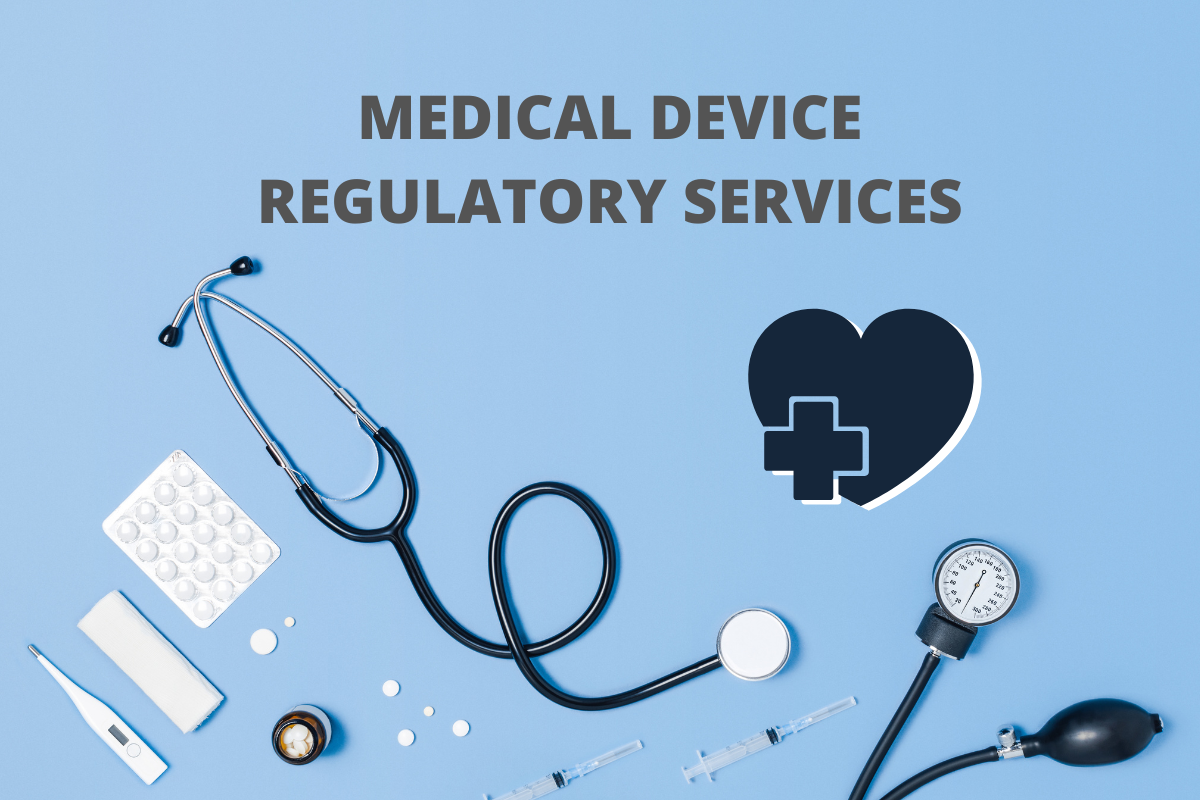Introduction
Obstetrics and Gynaecology, often referred to as OB-GYN, encompass medical care related to pregnancy, childbirth, and female reproductive health. The regulatory framework in India for medical devices in this field is overseen by the Central Drugs Standard Control Organization (CDSCO) under the Drugs and Cosmetics Act of 1940. This article outlines the CDSCO registration process for Obstetrical and Gynaecological Medical Devices, classifying them based on risk and providing insights into eligibility, documentation, and the registration procedure.
Regulatory Landscape
The CDSCO, operating under the Directorate General of Health Services (DGHS) within the Ministry of Health & Family Welfare, serves as the national governing body for medical devices in India. Comparable to regulatory bodies worldwide, such as the FDA in the United States and the European Medicines Agency (EMA), the CDSCO ensures compliance with standards, issues licenses, and collaborates with state regulators for comprehensive oversight.
Medical Device Classification
Medical devices are categorized into four classes (A, B, C, and D) based on risk. The classification impacts CDSCO application fees and processing timelines:
With the expansion of the definition of medical devices in 2020, all such devices must now be registered under the Drugs and Cosmetics Act. The classification of medical devices, ranging from Class A to D based on risk, dictates the CDSCO application fees and processing timelines.
- Class A and B Devices: Import requires a license from October 1, 2022.
- Class C and D Devices: Import licensing mandatory from October 1, 2023.
Navigating Obstetrical and Gynaecological Device Registration
Understanding Device Classification
The CDSCO classifies medical devices based on risk, with implications for the regulatory process:
- Class A: Low-risk devices.
- Class B: Low to moderate risk.
- Class C: Moderate to high risk.
- Class D: High-risk devices.
Application Process and Timelines
Regardless of classification, the CDSCO application process takes 6 to 9 months. Devices without a predicate device for comparison are deemed “Innovative” and may experience extended processing times.
OB-GYN Device Classification and Examples
To market obstetrical and gynaecological medical devices in India, understanding the medical device classification is paramount. Here’s a glimpse:
- Class A: Examples include menstrual cups.
- Class B: Intrauterine devices (IUDs) fall into this category.
- Class C: Devices like fetal heart monitors fall into the moderate to high-risk category.
- Class D: High-risk devices may include assisted reproductive technology devices.
| Medical Device Name | Risk Class |
| Abdominal decompression chamber | C |
| Abdominal decompression chamber pump | C |
| Abortion suction system manual aspirator | B |
| Birthing bed/table, powered | A |
| Cardiotocograph | C |
| Cardiotocograph transducer | C |
| Cardiotocography telemetric monitoring system | C |
| Cardiotocography telemetric monitoring system receiver | C |
| Cardiotocography telemetric monitoring system transmitter | C |
| Cervical anaesthesia kit | B |
| Cervical anaesthesia needle, reusable or single use | B |
| Colposcope | B |
| Contraceptive cervical cap, reusable or single use | C |
| Contraceptive spermicide | C |
| Contraceptive sponge | C |
| Diaphragm pessary | C |
| Endocervical aspirator | B |
| Endocervical specimen collection kit, no additive | B |
| Endometrial biopsy curette, reusable | B |
| Endometrial biopsy curette, single use/disposable | B |
| Endometrial biopsy kit | B |
| Endometrial cytology brush | B |
| Fallopian tube biopsy everting-balloon catheter | B |
| Fallopian tube catheterisation kit | B |
| Fallopian tube insufflator | B |
| Fallopian tube occlusion insert | D |
| Fixed-diameter cervical dil | B |
| Fixed-diameter cervical dilator, single-use/disposable | B |
| Flexible fibreoptic culdoscope | B |
| Flexible fibreoptic hysteroscope | B |
| Flexible fibreoptic laparoscope | B |
| Flexible fibreoptic mammary ductoscope | B |
| Flexible fibreoptic salpingoscope | B |
| Flexible ultrasound laparoscope | B |
| Flexible video culdoscope | B |
| Flexible video hysteroscope | B |
| Flexible video laparoscope | B |
| Flexible video mammary ductoscope | B |
| Flexible video salpingoscope | B |
| Foetal acoustic stimulator | B |
| Foetal bladder shunt | C |
| Foetal blood sampler | B |
| Foetal cardiac monitor | C |
| Foetal pleuro-amniotic catheter | C |
| Foetal scalp electrode, clip | C |
| Foetal stethoscope | A |
| Foetal vacuum extraction cup, reusable/single use | B |
| Foetal vacuum extraction system monito | B |
| Foetal vacuum extraction system, manual, reusable/single use | B |
| Foetal vacuum extraction system, pneumatic | B |
| Foetal/maternal multiple physiological parameter simulation kit | B |
| Foetal/maternal multiple physiological parameter simulator | B |
| Gynaecological bib | A |
| Gynaecological examination/treatment table | A |
| Gynaecological operating table top | A |
| Gynaecological operating table, electrohydraulic or electromechanical/hydraulic | A |
| Gynaecological scissors, reusable | B |
| Gynaecological scissors, single use/disposable | B |
| Gynaecological surgical microscope | A |
| Heel stirrup | A |
| Hysteroscopic insufflator | B |
| Hysteroscopic irrigation/insufflation system | B |
| Intrauterine cannula, reusable | B |
| Intrauterine cannula, single use/disposable | B |
| Intrauterine haemostatic balloon catheter | B |
| Intrauterine haemostatic suction catheter | B |
| Intrauterine imaging medium catheter | B |
| Intrauterine imaging medium catheterisation kit | B |
| Laparoscope laser coupler | B |
| Laparoscope laser adaptor | A |
| Laparoscope system | B |
| Laparoscope system, reusable or single use | B |
| Manual expandable cervical dilator | B |
| Mechanical foetal heart simulator | B |
| Motorized laparoscopic forceps | B |
| Papanicolaou smear kit or Endometrial sampling kit | B |
| Pelvic examination kit | B |
| Pelvimeter | B |
| Pelviscope | B |
| Perineal warmer | B |
| Perineometer | B |
| Pudendal anaesthesia kit | B |
| Resectoscope | B |
| Rigid culdoscope | B |
| Rigid fibreoptic hysteroscope | B |
| Rigid mammary ductoscope | B |
| Rigid optical laparoscope | B |
| Rigid salpingoscope | B |
| Rigid ultrasound laparoscope | B |
| Rigid video hysteroscope | B |
| Rigid video laparoscope | B |
| Suprapubic needle, surgical, reusable | B |
| Suprapubic needle, surgical, single use/ disposable | B |
| Umbilical ligator | A |
| Uterine injector | B |
| Uterine manipulator cervical cup/transilluminator | B |
| Uterine manipulator, reusable | B |
| Uterine manipulator, single use/disposable | B |
| Uterine packer | A |
| Uterine probe, reusable | B |
| Uterine probe, single use/disposable | B |
| Uterus-supporting pessary | B |
| Vaginal applicator, reusable or single use | A |
| Vaginal dilator, reusable | B |
| Vaginal dilator, single use/ disposable | B |
| Vaginal douche, reusable or single use | B |
| Vaginometer | A |
| Vaginoscope | B |
| Viscera retention paddle or Visceral retainer | B |
| Breast transilluminator | C |
| Amniotic membrane perforator, reusable | A |
| Amniotome, reusable | B |
| Bladder-supporting pessary | B |
| Catheter-tip transducer, pressure | B |
| Foetal Doppler system | C |
| Foetal Doppler system probe | C |
| Preservation medium for human semen | C |
| Sperm cryopreservation medium | C |
| Vitrification freezing kit | C |
| Vitrification Thawing/Warming kit | C |
| Handling medium | C |
| Gamete and embryo retrieval, storage & transfer medium | C |
| Hyaluronidase solution | C |
| Polyvinylpyrrolidone (PVP) Solution | C |
| Sperm Separation Medium | B |
| Sperm processing media | C |
| Water for Assisted Reproductive Technologies | B |
| In-Vitro embryo Culture medium, through day 5/6 of development | C |
| In-Vitro embryo culture medium, through day 3 of development | C |
| Protein supplement for in vitro embryo culture | B |
| Oil for embryo culture | B |
| Menstrual Cup | B |
Who Can Register Under CDSCO for Obstetrical and Gynaecological Medical Devices?
Entities eligible to register Obstetrical and Gynaecological Medical Devices with CDSCO include:
- Importers
- Indian Agents
- Foreign Enterprises with Indian Subsidiaries
- Corporates
Purposes of CDSCO Registration for Obstetrical and Gynaecological Medical Devices
CDSCO registration ensures compliance with guidelines, including:
- No harm to animals in cosmetic product testing.
- Safety for general consumption.
- Importation of only CDSCO-approved drugs and medical equipment.
CDSCO can grant registration for various purposes, such as Cosmetics Registration, Import or Manufacture of drugs, Export NOC, Test License, Ethics Committee Registration, and more.
Eligibility Criteria for CDSCO Registration Certificate for Obstetrical and Gynaecological Medical Devices
Eligible parties for CDSCO registration certificates for Obstetrical and Gynaecological Medical Devices include:
- Manufacturers with a registered office in India.
- Authorized agents of manufacturers.
- Subsidiary companies of manufacturers in India.
- Other importers dealing in cosmetic products.
Required Documents for CDSCO Registration Certification for Obstetrical and Gynaecological Medical Devices
Essential documents for CDSCO registration include:
- Application form
- Challan TR6
- ISO 13485
- Power of Attorney
- Undertaking of providing accurate information
- Certificate of Quality Assurance
- C.E. Design Accreditation
- Declaration of Conformity
- Schedule D(I)
- Master Plant File
- Device Master File (DMF)
- Free Sale Certificate (FSC)
Obstetrical and Gynaecological Medical Devices – CDSCO Registration Process
The application process involves the following steps:
- Product Classification: Determine if registration is required.
- Appointment of Indian Agent: Appoint an authorized Indian agent.
- Application Submission: Submit the application and required documents.
- Query Resolution: Respond to queries from CDSCO, if any.
- License Issuance: Upon satisfactory responses, CDSCO grants the license.
- Validity: The registration certificate is valid for three years.
Conclusion
As the Indian healthcare sector expands, manufacturers of Obstetrical and Gynaecological Medical Devices must navigate the CDSCO registration process. Adhering to the rules outlined in the Drugs and Cosmetics Act of 1940, CDSCO ensures the safety and efficacy of medical devices in India. Manufacturers, importers, and agents must collaborate to meet the regulatory requirements and contribute to the growth of the healthcare industry in the country.

